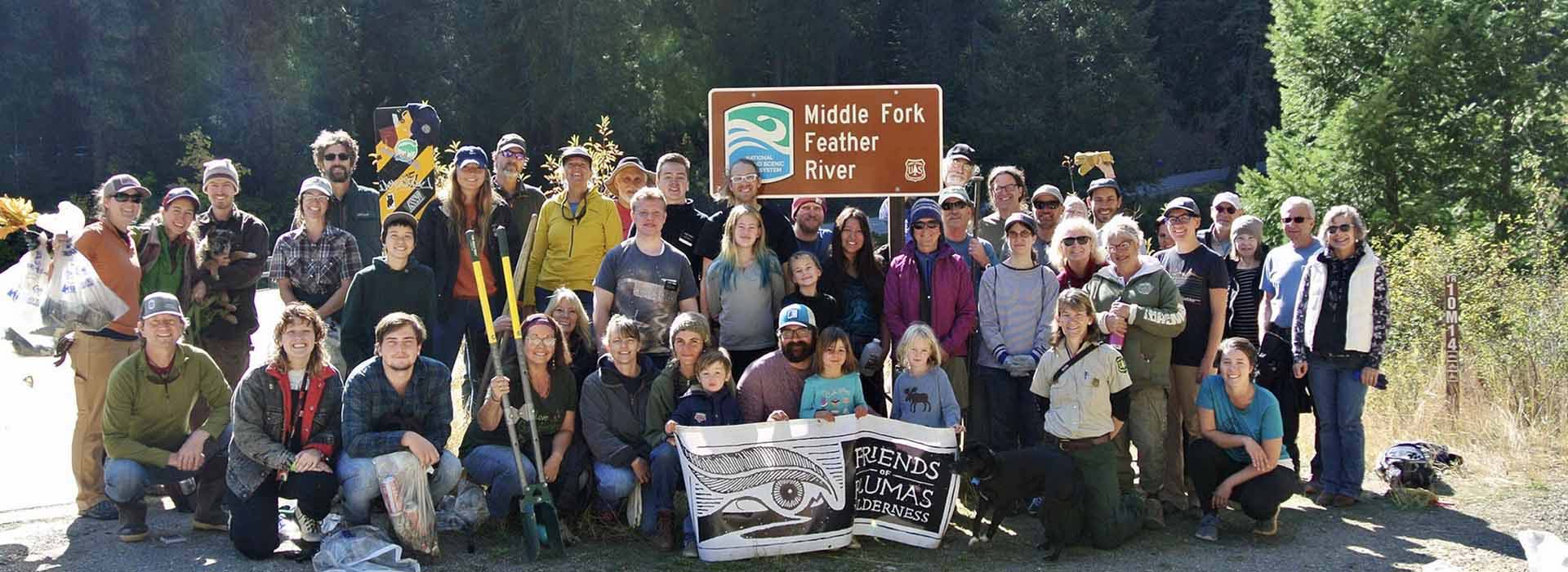
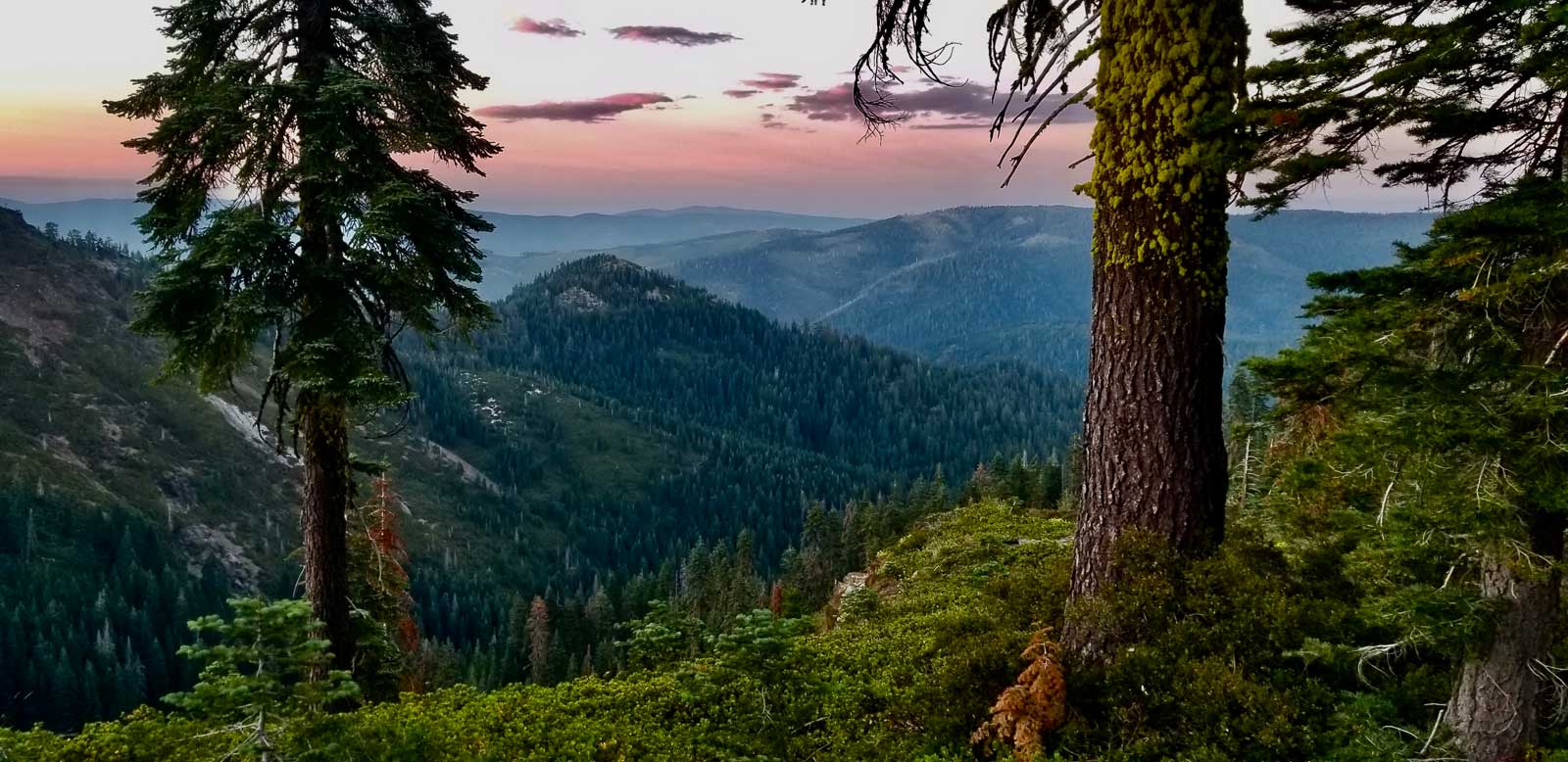

CONNECT WITH US
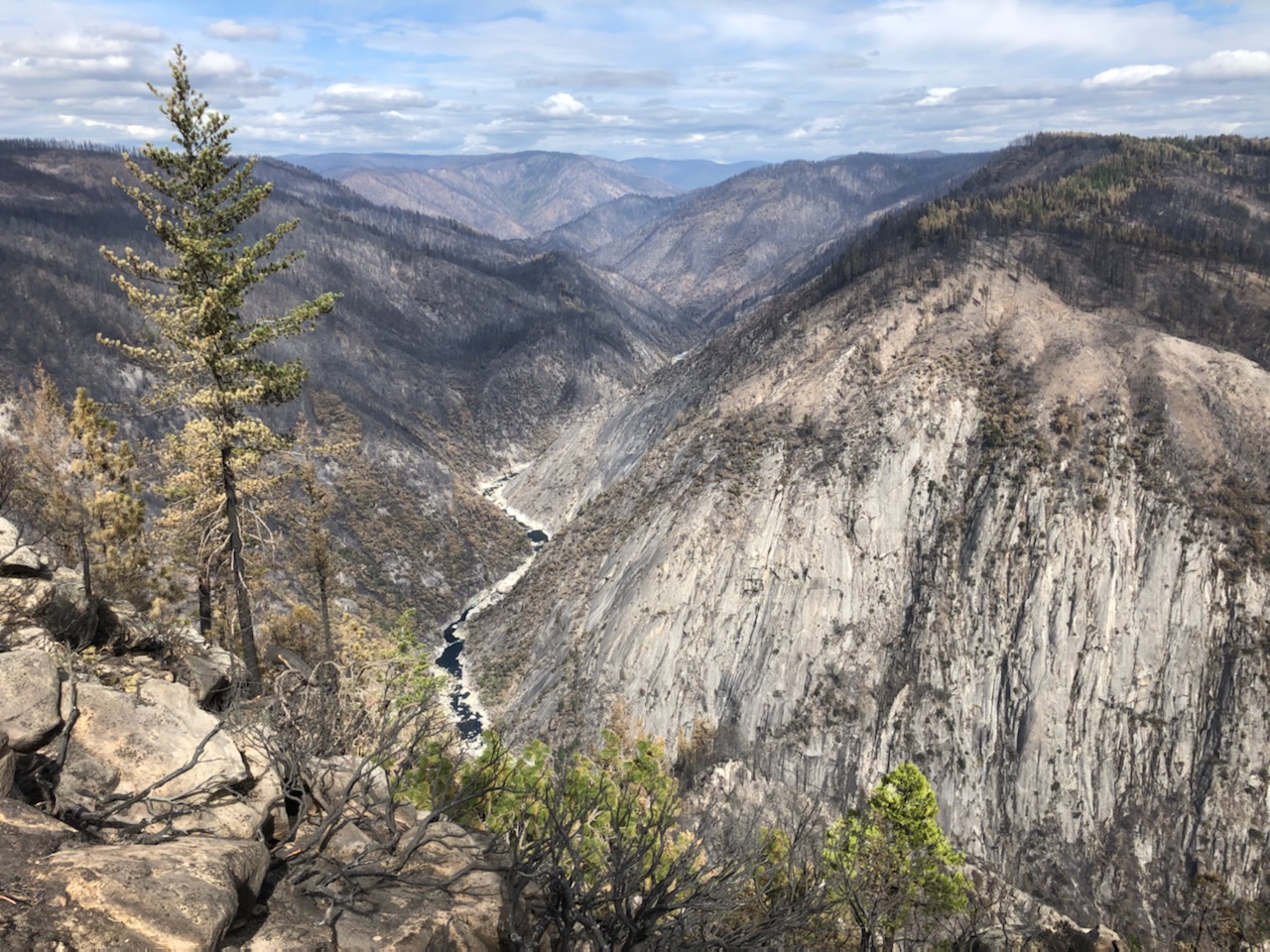
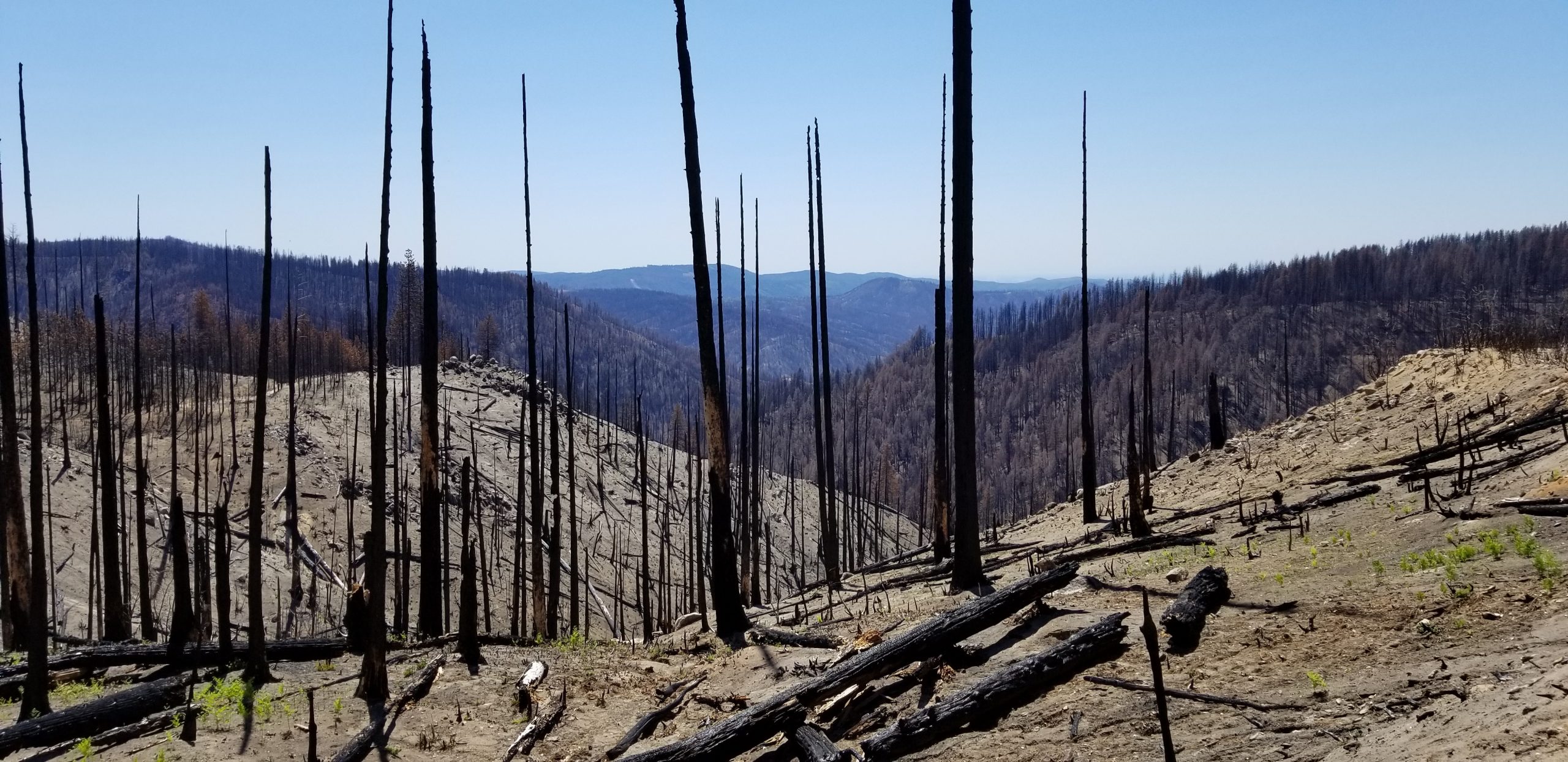
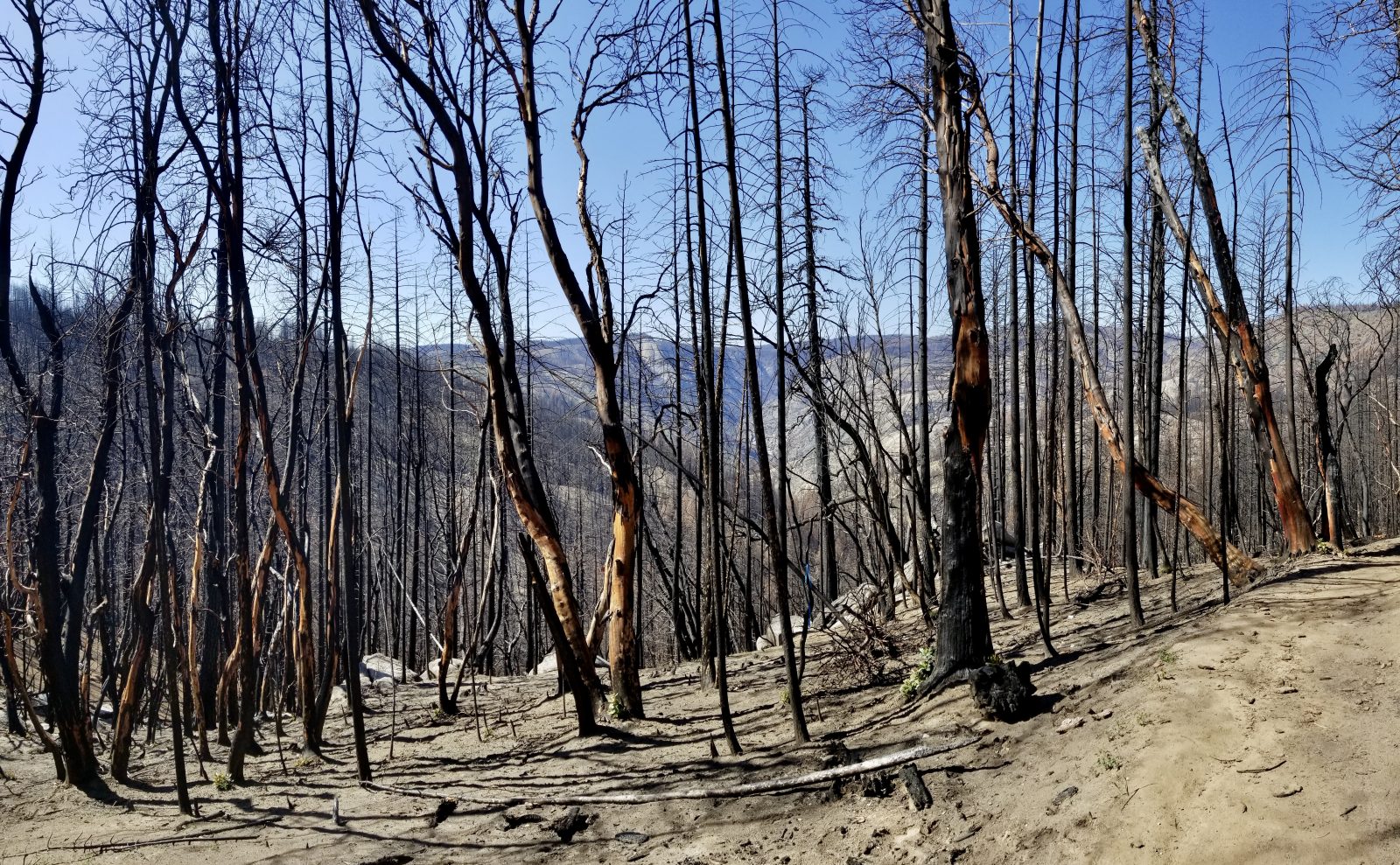
Infinite variations of black, browns, tans and grays arrest our vision as we drive through miles and miles of burned terrain. The standing remains of the once-green forest in the Fall River watershed are still beautiful, but in a shocking, sobering way. Some trees are burned to pencil-thin charcoal, the shapes at the top reminiscent of a perched raptor, fooling us more than once.
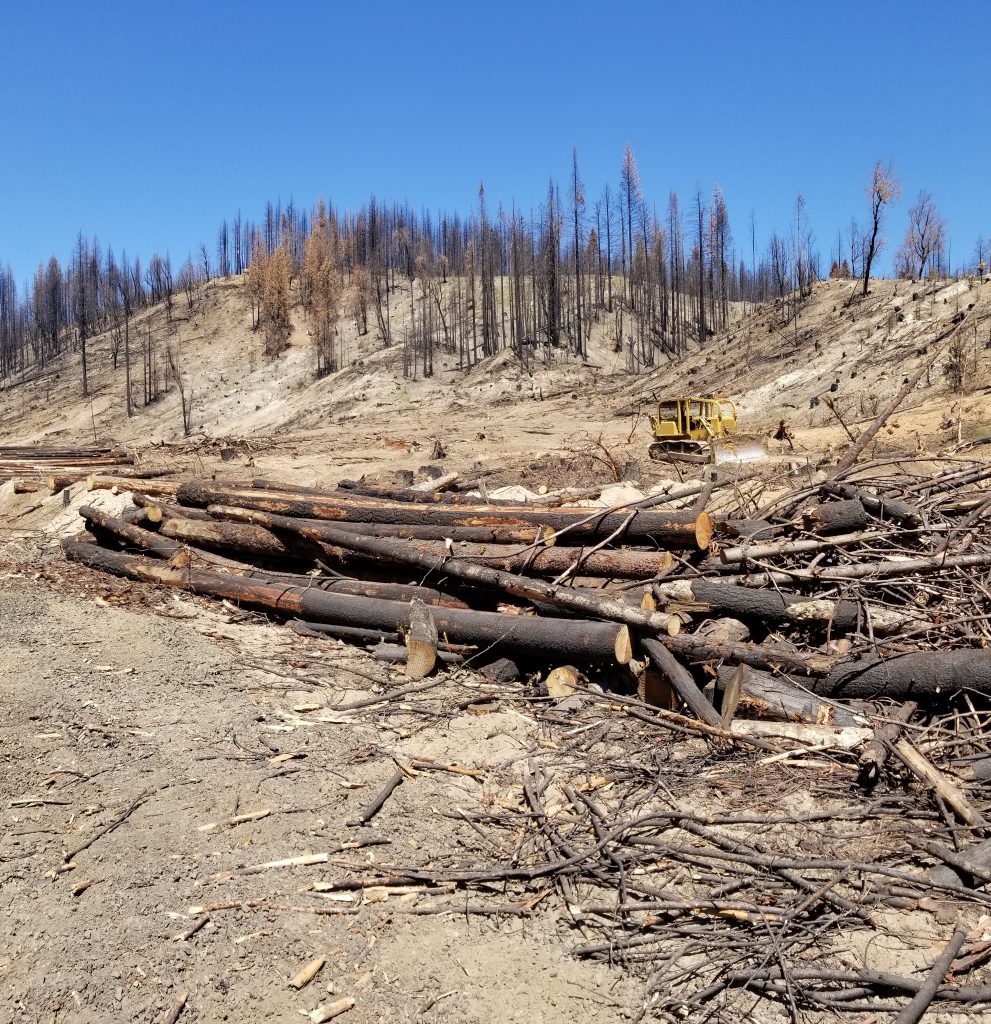
Heavy machinery, working even on the weekend on this private industrial forest land, savagely salvages the logs, taking every one except those behind the ‘WPZ’ marked in blue spray-paint. We guess that the Wildlife Protection Zones buffer the riparian corridors because any trickle of water must be so precious in this torched landscape. A procession of woodpecker species will come in to take advantage of the beetles and their larvae that come in succession. Leaving some trees to fall naturally, decompose, build and protect the soil seems wise, as does leaving some trees that burned less intensely and still have cones to provide a future seed source. But the private lands are scalped to a degree that seems to prioritize only financial gain.
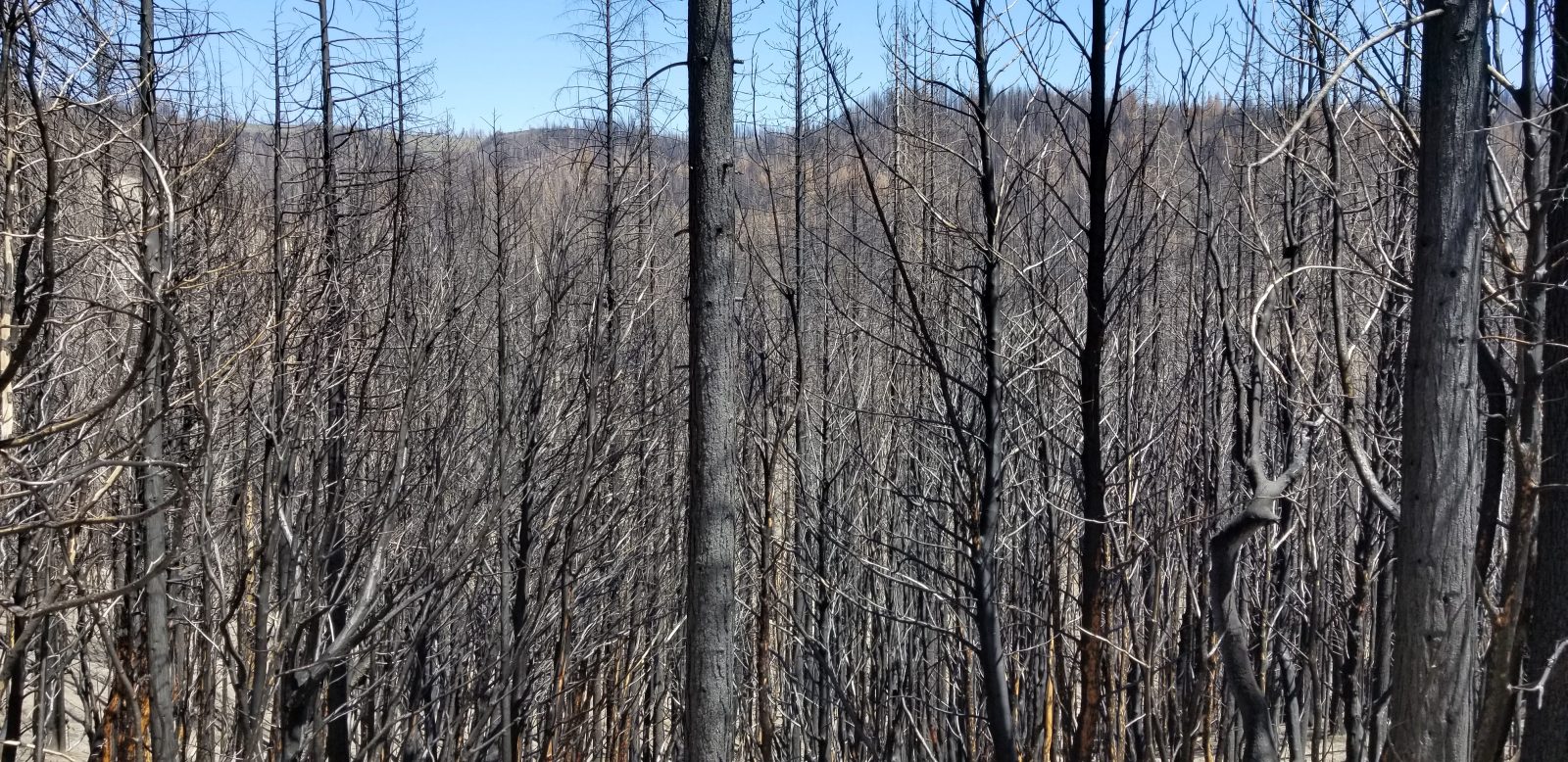
Crossing the boundary to Forest Service land provides some relief from the sour feeling in our guts. While the obvious mis-management of the past glares in stark relief now that the green wall of conifers is burnt to a crisp, at least it’s not all being salvage logged – not yet, that is. The landscape is opened up and views through burned snags to distant ridges that were hidden behind a wall of crowded conifers are now visible. Bald Rock Dome on the north side of the Middle Fork is stunning. Big Bald Rock and Little Bald Rock can be seen too, all from one vantage point: black, browns, tans, and grays all around.
Still, life is reappearing. Flowers are blooming on this warm spring day, shocking us with the persistence of their seeds following such an intense fire. Perennial shrubs, live oaks, deciduous oaks, and madrone sprout vigorously from their stumps. Little Ponderosa Pine seedlings, barely an inch tall, are scattered in the barren soil. The burned trees still provide shade, protecting the seedlings and wildflowers. Even in this part of the North Complex Fire, where the most intense burning took place, all is not lost.
But it still might be: the Plumas National Forest is preparing to salvage log 250 acres around the campground at the Feather Falls trailhead. It is very likely that public lands may end up like the industrial forest lands we witnessed, trampled by machinery and barren of life. Public comment is being sought. This trail is the busiest trail on the Ranger District and we have an opportunity to influence its future if we act now. If salvage logged, the seedlings will be crushed by machinery and shrubs will dominate, requiring herbicides if trees are to grow in the future.
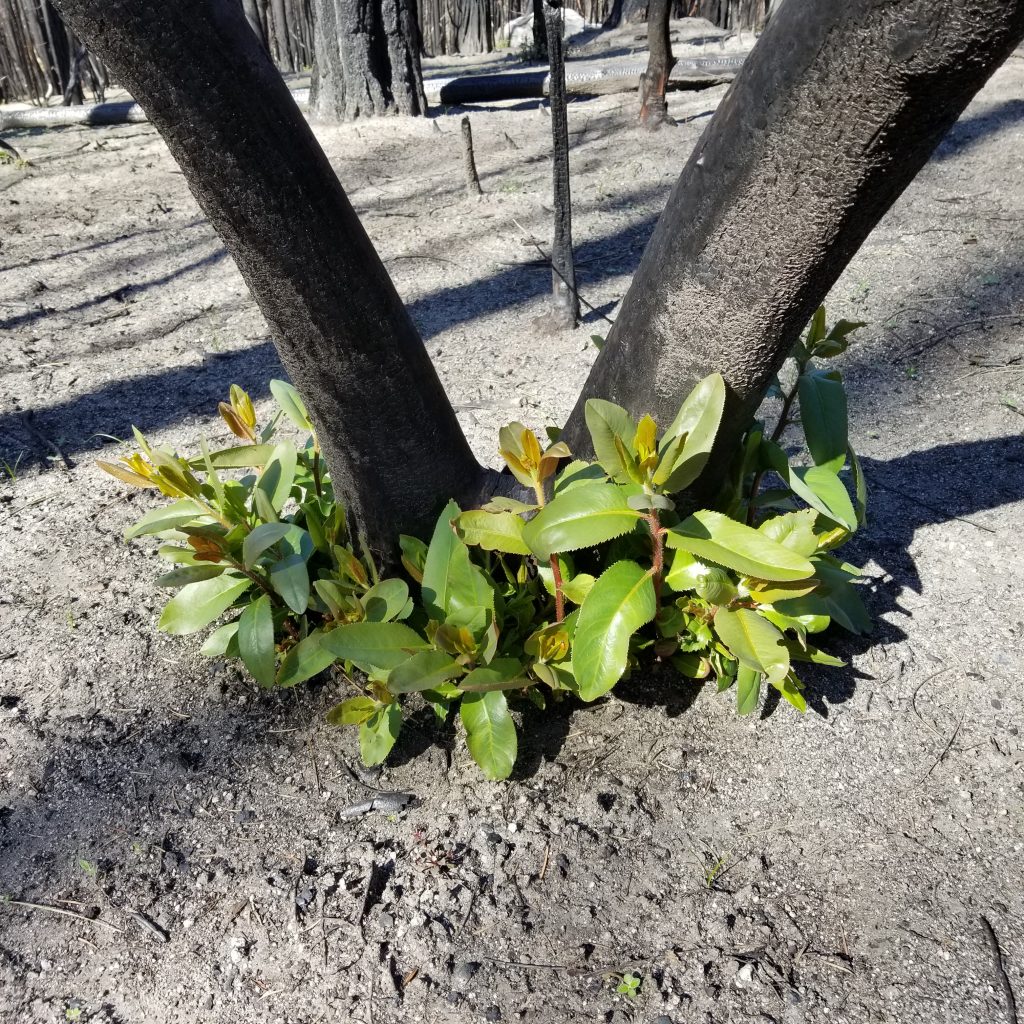
The history of the Bald Rock Inventoried Roadless Area is fascinating – proposed National Park designation, planned dams, one of the longest-serving Congressmen in California history, and more – read about it on our website. And read the Forest Service salvage logging proposal then share your input on your public lands.